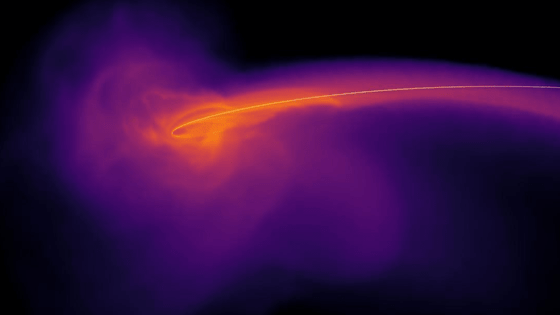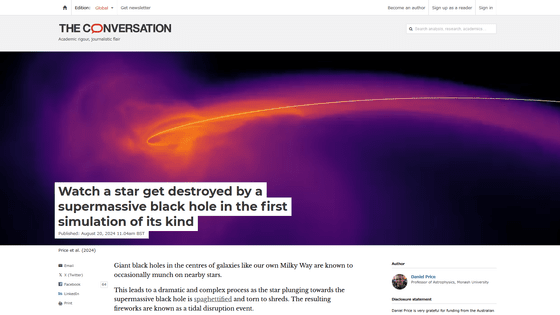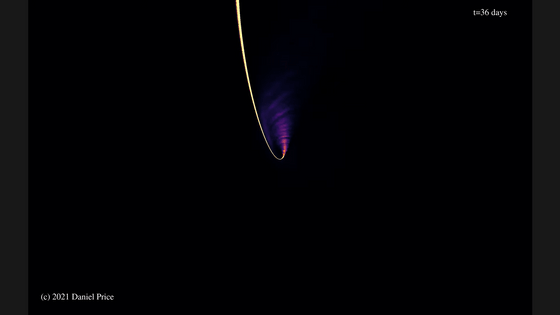A video of a black hole absorbing spaghetti-like stars, simulated over the course of a year on a supercomputer, is released

[2404.09381] Eddington envelopes: The fate of stars on parabolic orbits tidally disrupted by supermassive black holes
https://arxiv.org/abs/2404.09381
Watch a star get destroyed by a supermassive black hole in the first simulation of its kind
https://theconversation.com/watch-a-star-get-destroyed-by-a-supermassive-black-hole-in-the-first-simulation-of-its-kind-237032

What happens if you throw a star at a black hole? Things get messy (video) | Space
When a star is sucked into a black hole, it is subjected to strong gravity and stretched into long, thin threads. However, not all of the spaghetti-like stars are sucked into the black hole; only 1% of them are actually sucked in. The remaining 99% of the material is spewed out into space.
It is difficult to study supermassive black holes, for which the general law of gravitation does not apply, and in order to simulate spaghettification on a computer, it is necessary to encompass the effects of the theory of general relativity , which has not yet been studied.
But with the help of the supercomputer Ngarrgu Tindebeek , the team was able to simulate what a spaghetti-like star would look like, a process that took more than a year to create.
Below is a simulation of a spaghetti-like star created by the research team.
Tidal SHREDDING of a solar mass star by a black hole ONE MILLION TIMES the mass of the Sun - YouTube
A star that is sucked into a black hole leaves a trail as it is sucked into the black hole.

However, most of the material is released into space.

The released material is gradually absorbed.

It took roughly a year for most of the material to be incorporated.

The video below is a close-up simulation of matter being ejected from a black hole.
'Through this simulation, we were able to ascertain the existence of the spaghettification phenomenon and the reason why black holes shine so brightly,' the research team said.
The simulation used in this study has been made open source and can be downloaded from the following link.
GitHub - danieljprice/phantom: Phantom Smoothed Particle Hydrodynamics and Magnetohydrodynamics code
https://github.com/danieljprice/phantom

Related Posts:







